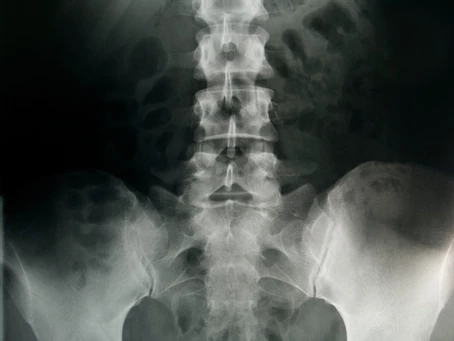Facts about Spinal Discs and How You Can Look After Them
Posted: July 28th, 2021

In today's blog, we are going to cover spinal discs and their vital role within your back, along with what you can do to protect them, because once they are injured how they function changes and this only leads to abnormal changes to the surrounding structures of the spine overtime...
The easiest way to damage a disc is by a combination of bending forwards and twisting/turning and once a disc is damaged it is largely irreparable due to the discs limited blood supply. Therefore we want to avoid combining these movements at all costs! Do this by making sure you are directly facing an object when picking it up from the ground rather than twisting as you move.
If you experience a sharp cracking sound on a sudden movement you may be hearing some fibres that make up the outer layer of the disc (known as the annulus fibrosis) tearing. This is often the first area to become damaged and research has shown it takes as little as 200 forward bends to commence damage.
Did you know that sitting alone exerts more pressure than 3x the weight of your torso? Research has shown that the optimum sitting position to reduce this pressure is to recline your chair to 120 degrees while placing a small pillow (roughly 5cm on compression) behind the base of your low back.
Interestingly you cannot damage a disc by compressing it! Your discs are far stronger under compression than the rest of your spinal column, therefore, they are the last structures to become damaged and a significant amount of force would be required to damage them this way and before any disc damage, the vertebrae would fracture, due to the amount of pressure your discs exert from within. A normal healthy disc has a resting internal pressure of 10 psi, however they can withstand far greater loads! (most car tyres are around 32psi)
As we age our discs degenerate and the internal pressure reduces, meaning we cannot absorb forces, in the same way, making bulges more common, although degenerated discs have been demonstrated to be more resistant to compression.
You are more likely to damage a disc with a sudden heavy load than a slow gradual load, this is another good reason to make sure you warm up adequately before attempting to move a heavy object.
Discs are designed to absorb forces, however, they are less effective at this when doing repetitive movements, therefore we want to avoid loading up our backs in a repetitive way during a short timeframe.
If you require any advice feel free to get in touch with Falcon Chiropractic Harrogate.
Leaving Pointers:
Try to keep your spine flat if you are dealing with a disc injury and avoid any form of bending/twisting.
We want to encourage movement, often a gentle walk can help.
Your discs are incredibly strong, in fact, the stronger than the bones that surround them.
Aim to sit with a 120 degree reclined backrest and a cushion behind your lower back.
Avoid any extension/back arching exercises if you have a disc bulge.
Keep hydrated as the water content of the internal disc is around 70-90%
Finally aim to keep objects close to your body when lifting them as this reduces the load on your low back
New Patient Offer
A thorough consultation, comprehensive physical examination and x-rays (if clinically required).

Guides
Want More Information?
Get the latest guides and information from our experts at Falcon Chiropractic. Delivered straight to your mailbox.